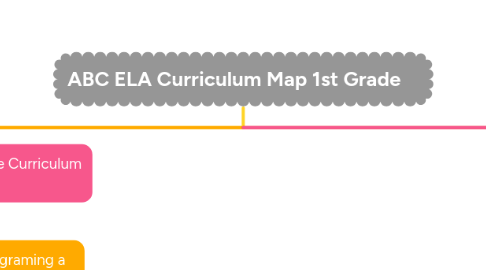
1. Phase 1 Planning and Educating
1.1. The process of diagraming a curriculum to identify gaps, repetiveness, and areas where curriculum does not align with standards (Schutte, Line & McCullick, 2018)
1.1.1. All team members Superintendent, Myself, 1 Principal, 2 Assistant Principals, 2 Reading Specialist, Technology Integration Coach, 3 Classroom teachers-
1.1.2. Curriculum director- ELA specialist facilitates and consults (Ornstein & Hunkins, 2017).
1.1.3. Superintendent and Assistant Superintendent- express expectations and goals, provide proper professional development, involved in curriculum alignment and group decision making in order to create leaders and teachers who can carry out responsibilities (Spatt & Danna, 2019).
1.1.4. Principals must be trained alongside teachings in order to develop quality curriculum maps (Spatt & Danna, 2019).
1.1.5. Reading Specialist role- provide guidance and information for the teachers to be successful- support teacher buy-in (Rawle, Bowen, Murck & Hong 2017).
1.1.6. Teachers are the focus of implementation because they are directly involved with the implementation in the classroom (Ornstein & Hunkins, 2017).
2. Phase 2 Designing the Curriculum Map
2.1. Is the process of diagraming a curriculum to identify gaps, receptiveness, and areas where curriculum does not align with standards (Schutte, Line &McCullick, 2018)
2.1.1. Backwards Design Approach keeping the end in mind (Okojie, Bastas & Mirlay, 2022)
2.1.2. Standards, sequence, content, assessments, activities, resources, pacing guides and units are items a curriculum map should include (Archambault & Masunaga, 2015.
2.1.2.1. Reading Team members review standards, sequences, content, skills, assessment, activities, resources, essential questions, timelines, pacing guides, and units (Archambault & Masunaga, 2015).
2.1.2.2. Language Team members review standards, sequences, content, skills, assessment, activities, resources, essential questions, timelines, pacing guides, and units (Archambault & Masunaga, 2015).
2.1.2.3. Technology Team using information from Reading and Language Team, research and identify appropriate technology to integrate into program (Johnson, Jacovina, Russell & Soto, 2016).
